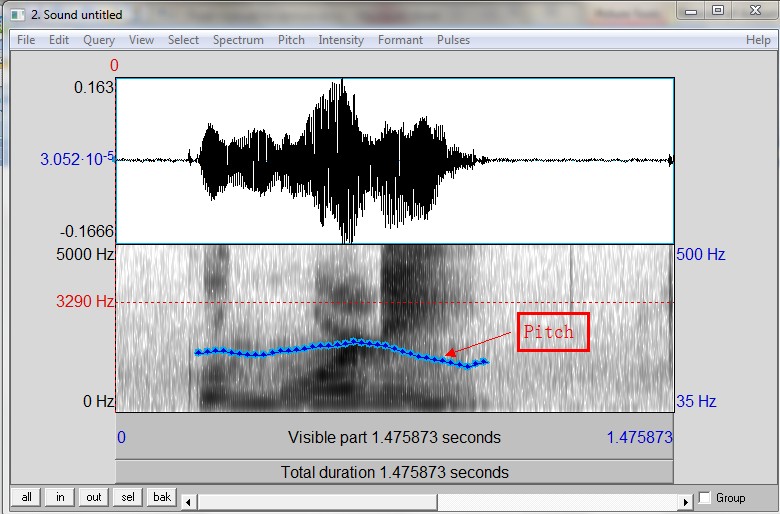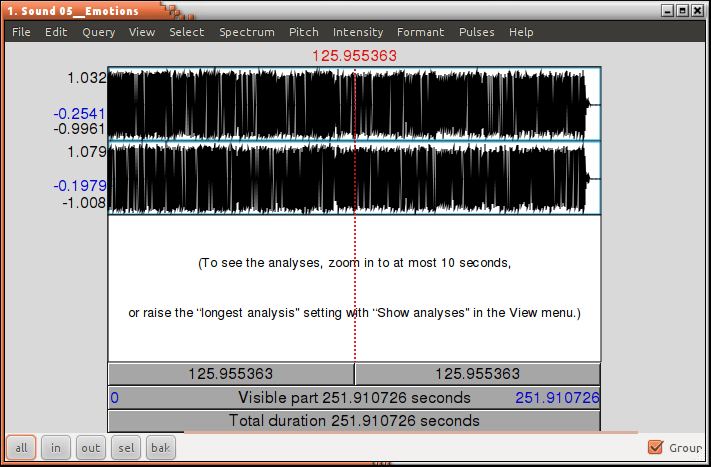Advanced speech analysis tools II: Praat and more Judging from mentions spotted on the Internet, Praat (Dutch for 'talk'), created by Paul Boersma and David Weenink of the Institute of Phonetic Sciences, University of Amsterdam, is currently among the most popular of free, downloadable speech analysis software p. Praat voice analysis software 10. Praat reports different kinds of measurements for both jitter and shimmer features, which are listed below. Jitter measurements. Download Praat - Speech analysis and manipulation software. Speech synthesis. From pitch, formant, and intensity; articulatory synthesis.
Praat is a free and open source speech analyzer software download filed under graphics software and made available by Paul Boersma and David Weenink for Windows.

The review for Praat has not been completed yet, but it was tested by an editor here on a PC and a list of features has been compiled; see below.
Creates an interesting phonetician analysis of voices and speechPraat is a piece of software that helps phoneticians analyze, synthesize, and manipulate speech.
Praat enables you to create a source signal from scratch or from an existing speech signal, but also to create a filter or to extract it from an existing source. You can manipulate (change, adapt) both the source and the filter before doing the actual synthesis, which combines the two.
Features and highlights
- Speech analysis: spectral analysis (spectrograms), pitch analysis, formant analysis, intensity analysis, jitter, shimmer, voice breaks
- Cochleagram
- Excitation pattern
- Speech synthesis: from pitch, formant, and intensity, articulatory synthesis
- Listening experiments: identification and discrimination tests
- Labelling and segmentation: label intervals and time points on multiple tiers
- Change pitch and duration contours
- Filtering
Praat 6.1.42 on 32-bit and 64-bit PCs

This download is licensed as freeware for the Windows (32-bit and 64-bit) operating system on a laptop or desktop PC from graphics software without restrictions. Praat 6.1.42 is available to all software users as a free download for Windows. As an open source project, you are free to view the source code and distribute this software application freely.
Filed under:- Praat Download
- Freeware Graphics Software
- Open source and GPL software
- Major release: Praat 6.1
- Speech Analyzing Software
Praat for Beginners
Recording in Praat:Digitizing analog signals
- See also Quick guide to recording
- See also Quick guide to sound settings
- See also Sound buffer, Managing sound, Mono and stereo
- See also Sound objects and LongSound objects
1. Digital recording
- Computers work with numbers, hence the term digital.
- If your sound data is already in digital form, you can just copy it from wherever it is (the web, data disk, memory card etc) as a sound file. Read more about [Link]opening sound files[Link], and Sound file formats.
- If not, you will have to digitize your analog sound first.
Read more about Analog and digital sound. - Praat digitizes sound in its Sound recorders (one for mono, one for stereo).
- Strictly speaking, this is done by your computer sound system, the Praat Sound recorders control that process for you.

2. Selecting the sound source
Depending on your sound system, you can have various sound devices connected to your computer. You possibly have at least the following:

- A microphone (mono or stereo) connected to the microphone input socket of the sound system.
- Warning: do not connect the output of a microphone amplifier to the microphone input; use the line input instead (the microphone input is only intended for unamplified signals straight from the microphone itself).
- An external device like an audio CD player, radio, tape or digital recorder etc., connected to the line input socket.
- Warning: do not connect the loudspeaker output (from a radio, power amplifier, recorder etc.) to the line input (the line input is intended for weaker preamplified signals, not strong power amplified signals).
- An audio CD disk playing in the computer’s CD-ROM or DVD-ROM drive.
The source is selected from the recording section of the Windows Volume control:
Praat Voice Analyzer
This example is from Windows XP. | The source you want is selected by ticking the white box at the bottom. Sources not selected are silent. There are three different sources here:
|
3. The Praat Sound recorders
- The Sound recorders are opened from the Objects window. In the New menu select Record mono sound or Record stereo sound depending on what you want to do:
- The Sound recorder opens in its own window:
- The empty white area in the centre is for the recording level meter, which only comes on during actual recording. Otherwise, like now, there is a “Not recording” warning. Both recorders have the same layout and same functions. The only difference so far is the selected recording mode (top left), mono or stereo. When you start recording, the level meter comes on:
- The stereo recorder on the left, the mono recorder on the right.
- Stronger recording signal levels will show yellow in the meter. The ideal level is the boundary between green and yellow.
- When the signal is too strong, the meter will show red. Red portions of the recording will be distorted and should be avoided.
- Do a test recording first to find the ideal setting. You can’t adjust while recording is in progress, because any modification will take effect too late.
- The Sound recorder controls:
4. Recording procedures
- Open the Windows Volume control and set your playback options.
- Open the Windows recording control and set your signal source.
- Open the Praat Sound recorder, mono or stereo as required.
- Select the Sampling frequency.
- Do a test recording first, repeat until you are satisfied.
- Click the Record button to commence recording.
- Watch the level meter and progress bar during recording.
- Click the Stop button to stop recording.
- Click the Play button to listen to the recording, check its quality; the [Esc]-key interrupts playback.
- For a new recording, click the Record button again; the progress bar is reset and the new recording commences.
- When you are satisfied with your recording, [L]save it as a soundfile[L] if you wish.
- If you wish to copy your recording to the Objects list, name it and click Save to list.
- Close the Sound recorder when you’ve finished.
Praat Voice
© Sidney Wood and SWPhonetics, 1994-2014
Praat Voice Analysis Software
_______________________________________________________________
